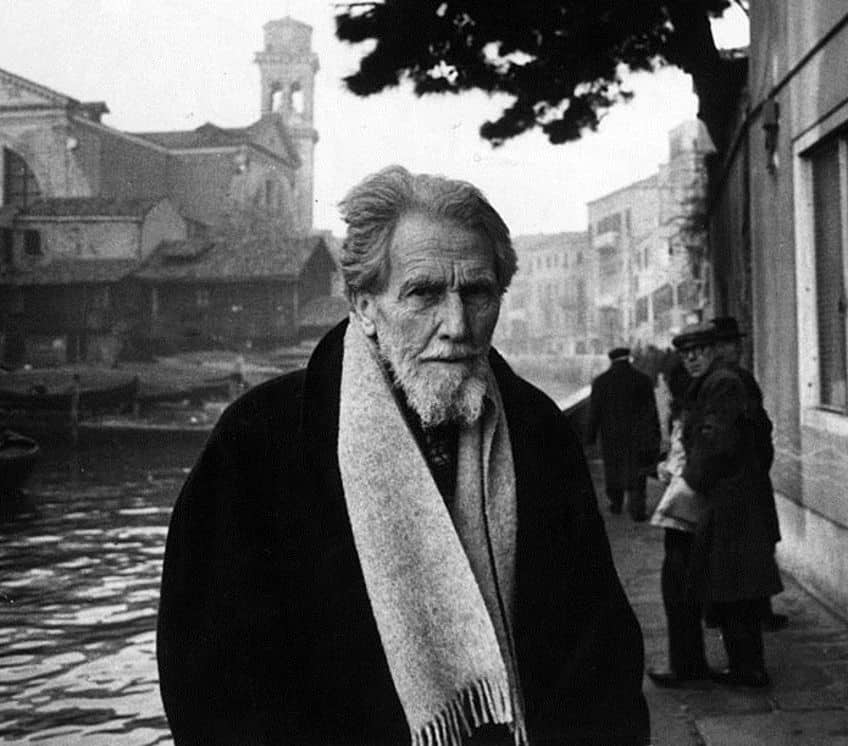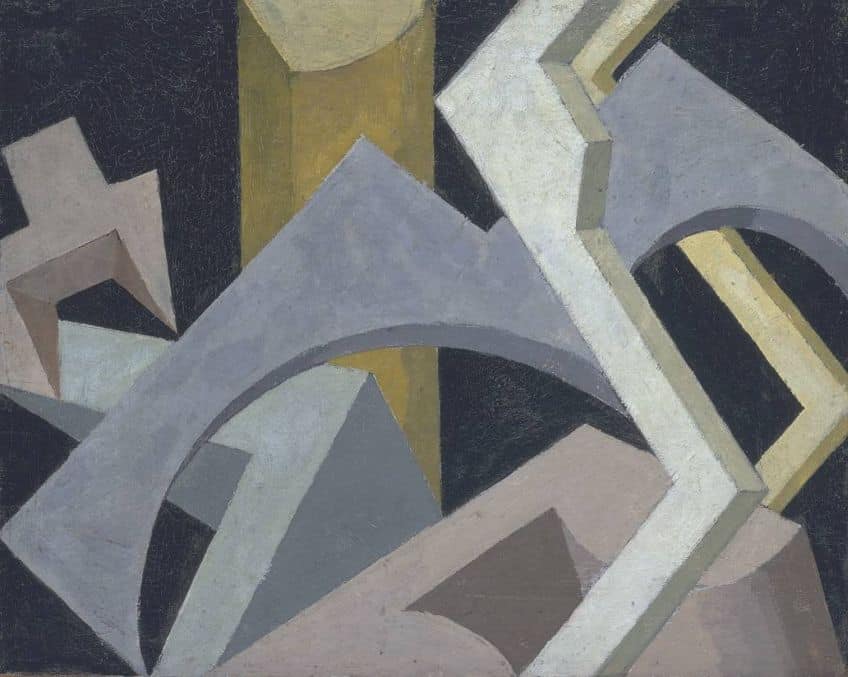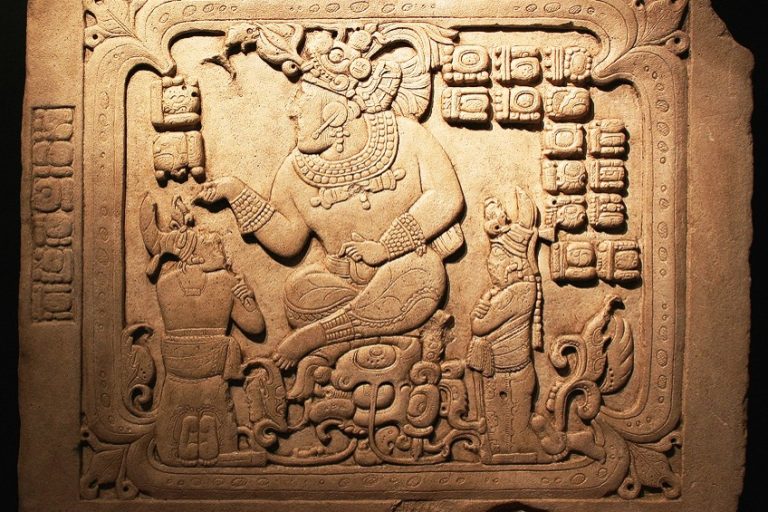Vorticism Art – Introducing Avant-Garde Dynamism
Welcome to the dynamic realm of Vorticism, an avant-garde art movement that emerged in the early 20th century, setting a vibrant tone for the artistic landscape of its time. Spearheaded by a group of forward-thinking artists, the Vorticism movement sought to encapsulate the essence of modernity, technological advancement, and the tumultuous spirit of the era. At its core, the Vorticist aesthetic is a dynamic fusion of geometric abstraction, bold lines, and a vivid exploration of form and space. In this exploration of the Vorticism movement, we delve into the intricacies of this revolutionary artistic approach, unraveling the visual language of the Vorticist artists and the impact they left on the tapestry of art history.
Vorticism Art: A Dynamic Overture of Form and Futurism
In the early decades of the 20th century, a groundbreaking artistic movement emerged, captivating the avant-garde minds of its time and leaving an indelible mark on the trajectory of modern art. This movement, known as Vorticism, unfolded as a revolutionary response to the seismic shifts in society, technology, and aesthetics. Led by a cohort of visionary artists, the Vorticism movement encapsulated the essence of a rapidly changing world, channeling the energy of modernity into a vibrant visual language.

Vorticism Origins and Influences: The Birth of a Revolutionary Aesthetic
In the crucible of the pre-World War One era, a tectonic shift was underway in the artistic landscape—a shift that would give rise to the daring and innovative movement known as Vorticism. The year 1913 marked the inception of this avant-garde force, a response to the tumultuous currents of a world hurtling toward change. At its core, Vorticism was a bold rebellion against the status quo, a visual insurgency against the prevailing artistic norms.
The genesis of Vorticism can be traced to a confluence of factors that defined the zeitgeist of the early 20th century. Technological advancements were transforming the fabric of society, introducing new modes of transportation, communication, and industry. The metropolis, with its cacophony of sounds and ceaseless activity, became both a playground and a battleground for artists seeking to encapsulate the essence of the modern experience.
In this dynamic urban environment, where progress and chaos coexisted, Vorticist artists discovered the wellspring of inspiration for their revolutionary aesthetic.
The impending cataclysm of World War One loomed large over the collective consciousness. The drumbeats of conflict echoed through the air, and the tension was palpable. It was in this charged atmosphere that Vorticism found fertile ground. The movement’s artists, acutely aware of the impending upheaval, sought to distill the essence of this uncertainty, translating it into a visual language that was as bold and unpredictable as the times in which they lived.
In their quest for a new artistic language, Vorticist creators drew inspiration from the Cubist and Futurist movements. Cubism, with its fragmented and multi-perspective representations, provided a conceptual foundation. The fractured reality depicted by Cubist artists resonated with Vorticist sensibilities, offering a way to deconstruct and reconstruct the visual world. Simultaneously, the Futurist emphasis on dynamism and speed left an indelible mark. Vorticists, like their Futurist counterparts, sought to capture the energy and movement inherent in the modern age.
The influence of these artistic predecessors acted as a catalyst, propelling Vorticism into uncharted territory. However, Vorticists did not merely mimic; they synthesized these influences into a distinctive aesthetic that was uniquely their own. The movement became a crucible for experimentation, a space where artistic boundaries were pushed, and the traditional notions of representation were dismantled.

In the crucible of Vorticism’s origins, a visual revolution was underway. Artists, driven by a rebellious spirit and fueled by the chaos of their time, embarked on a journey to distill the essence of modernity onto canvas. Little did they know that their bold strokes and geometric innovations would leave an enduring imprint on the canvas of art history, forever altering the trajectory of artistic expression.
Founding Figures and Manifesto: Forging the Vorticist Vision
The heartbeat of the Vorticism movement resided in the visionary minds and skilled hands of artists who dared to defy convention, forging a radical path through the artistic landscape of the early 20th century. Among these pioneers were luminaries such as Wyndham Lewis (1882-1957), Ezra Pound (1885-1972), and Henri Gaudier-Brzeska (1891-1915) – trailblazers who would shape the movement’s identity and leave an indelible mark on the course of modern art.
Wyndham Lewis, a polymath whose talents extended beyond the canvas to literature and philosophy, emerged as a central figure in the Vorticist narrative. His keen intellect and artistic prowess positioned him as both a driving force and a spokesperson for the movement. Lewis, along with his contemporaries, recognized the need for a platform that could amplify their collective voice, a space where the ideals of Vorticism could be articulated and disseminated.
This need found expression in the form of the Blast magazine, a publication that would become the crucible for the Vorticist manifesto.
In 1914, the inaugural issue of Blast hit the cultural landscape like a visual and intellectual explosion. Within its pages, Wyndham Lewis unveiled the Vorticist manifesto—a bold declaration that would serve as a rallying cry for artists seeking a departure from the conventions of their time.
The Vorticist manifesto, a literary and philosophical tour de force, was far more than a mere proclamation of artistic intent. It was a clarion call to arms, a call for a break from the sentimental and the imitative. In its pages, the manifesto laid bare the movement’s rejection of artistic stagnation and conformity. It exhorted artists to cast aside the shackles of tradition and embrace the transformative power of the machine age.
Central to the manifesto was an impassioned plea for the geometric purity of form—a rejection of the ornate and an embrace of the stark and streamlined. The machine, symbolic of progress and industrialization, became a muse for Vorticist artists. In the manifesto, the machine was not just a subject but a source of inspiration, a powerful force that could propel art into uncharted realms of expression.

The publication of the Vorticist Manifesto marked a watershed moment in the history of modern art. It was a manifesto not just for a movement but for a new way of seeing and interpreting the world. The impact of this literary and artistic proclamation rippled through the artistic community, inspiring a generation of creators to join the Vorticist cause.
In the crucible of Blast and the Vorticist manifesto, a revolution was born. The founding figures, with their collective vision and defiant spirit, had not only given birth to a movement but had also sown the seeds of an artistic renaissance that would echo through the corridors of art history for generations to come.
Visual Language of Vorticism: A Symphony of Form and Futurism
In the chronicle of art history, Vorticism stands as a visual symphony, a dynamic fusion of sharp lines, and geometric shapes, and an unapologetic exploration of form and space. At the heart of this avant-garde movement was a profound commitment to distilling the essence of the modern world into a visual vocabulary that transcended convention. The artists of Vorticism, wielding brushes like instruments, sought not merely to depict but to orchestrate a vibrant portrayal of the rapidly evolving society they inhabited.
Central to the aesthetics of Vorticism was a bold and deliberate use of sharp lines. Lines became more than just delineations; they became conduits of energy, slicing through the canvas with an assertiveness that mirrored the pace of the industrialized world. These lines, often intersecting and colliding, created a sense of dynamic tension, capturing the vibrancy and chaos of the urban environments that inspired the movement.
Geometric shapes emerged as the building blocks of the Vorticist visual lexicon.
Triangles, rectangles, and polygons became the vocabulary through which artists communicated their vision of a world in flux. The deliberate simplicity of these shapes belied their expressive power, as artists wielded them to construct intricate visual narratives. The use of geometric forms was not merely an aesthetic choice; it was a conscious departure from the ornate and the representational, a visual manifesto echoing the movement’s rejection of artistic sentimentality.
A fearless exploration of form and space defined the artistic endeavors of Vorticist creators. Traditional perspectives were abandoned in favor of a dynamic reinterpretation of space, where foreground and background collided, and dimensions were distorted. This audacious approach to space mirrored the disorienting experiences of the modern urban landscape, where traditional spatial boundaries seemed to dissolve in the face of progress.
In the pursuit of expressing the essence of the modern world, Vorticist artists engaged in a synthesis of abstraction and futurism. The movement embraced the spirit of Futurism, which exalted the dynamism of contemporary life and the technological marvels of the machine age. However, Vorticism departed from Futurism by introducing a level of abstraction that transcended mere representation. It was not about capturing a static moment in time but about distilling the energy and complexity of an entire era onto the canvas.

The visual language of Vorticism, with its bold lines, geometric precision, and fearless exploration of form, resonates as more than a stylistic choice; it is a visual manifesto, a testament to the transformative power of art to mirror and transcend the complexities of the modern world. In the canvases of Vorticist artists, we find not only a reflection of the past but a timeless exploration of the interplay between form, futurism, and the ceaseless march of progress.
A Vorticist Artist: Wyndham Lewis (1882 – 1957)
| Date of Birth | 18 November 1882 |
| Date of Death | 7 March 1957 |
| Place of Birth | Amherst, Nova Scotia, Canada |
| Nationality | British |
| Art Movement | Vorticism |
| Mediums Used | Painting, drawing, and writing |
Wyndham Lewis spent his formative years traversing the landscapes of both Canada and England. His childhood, marked by a penchant for artistic expression, foreshadowed the avant-garde journey that would define his later life.

Training and Early Artistic Endeavors
Lewis’s formal artistic training commenced at the Slade School of Fine Art in London, where he honed his skills as a draftsman and painter. His time at the Slade was formative, exposing him to a milieu of artistic ideas and influences that would shape the trajectory of his future work.
Influences and Formative Years
Lewis’s early influences included the Post-Impressionist movements, particularly the works of Vincent van Gogh (1853-1890) and Paul Cézanne (1839-1906). However, it was the encounter with the Cubist and Futurist movements that proved transformative.
The dynamism of these avant-garde styles laid the groundwork for Lewis’s own artistic philosophy, leading to the formation of the Vorticist movement.
Literary Pursuits and Philosophical Contributions
Lewis’s influence extended beyond the canvas. A prolific writer, he penned novels, essays, and critiques, making significant contributions to modernist literature. His philosophical treatise Blasting and Bombardiering (1937) provided insights into his thoughts on art and culture, showcasing the interconnectedness of his literary and visual pursuits.
Development of Vorticism
As a pivotal figure in the Bloomsbury Group, Lewis evolved into a leading force behind the Vorticist movement. The publication of the inaugural issue of Blast in 1914 marked a watershed moment, with Lewis introducing the Vorticist manifesto—a bold declaration urging artists to embrace the machine age and reject sentimentality. This manifesto crystallized the principles that would define Vorticism, and Lewis’s subsequent artworks, including notable pieces like Workshop (1914-1915) and The Crowd (1914-1915), embodied the movement’s dynamic fusion of geometric precision and a fearless exploration of form.

Later Years and Legacy
Lewis’s later years were marked by a complex relationship with the artistic and literary circles he had once navigated. Despite controversies and political shifts, his contributions to modernism endured. Wyndham Lewis passed away on 7 March 1957, leaving behind a legacy that resonates in the geometric precision of Vorticism and the multifaceted exploration of the modern age. His life’s journey reflects a relentless pursuit of innovation, challenging conventions, and shaping the course of 20th-century artistic expression.
Vorticist Artworks by Wyndham Lewis
In the revolutionary tapestry of Vorticist art, Wyndham Lewis’s masterpieces, Workshop and The Crowd, stand as monumental embodiments of the movement’s principles. These works, created during the tumultuous years of the early 20th century, not only showcase Lewis’s technical prowess but also serve as profound visual commentaries on the essence of the modern world, steeped in the ethos of Vorticism.
Both Workshop and The Crowd transcend the conventional boundaries of representation.
They are not static snapshots but dynamic compositions that encapsulate the spirit of Vorticism. In these masterpieces, Wyndham Lewis, the vorticist visionary, invites us to witness the convergence of geometry and chaos, providing a visual entry into the very essence of the age- an age pulsating with the relentless energy of progress and the cacophony of modern existence. Let us take a closer look at these paintings.
Workshop (1914 – 1915): A Dance of Geometric Harmony Amidst Industrial Tumult
| Date | 1914 – 1915 |
| Medium | Oil on canvas |
| Dimensions (cm) | 91 × 76 |
| Current Location | Tate Modern, London, United Kingdom |
Workshop emerges as a dynamic exploration of form and function, where geometric precision takes center stage amidst the chaos of industrial tumult. Lewis, with a meticulous hand, employs sharp lines and converging shapes to create a visual symphony that mirrors the rhythmic harmony within a workshop setting. The composition pulsates with energy, as if the machinery itself is conducting a dance of creation.
The geometric forms in Workshop are not mere representations; they are the very essence of the industrial landscape. Triangles intersect and rectangles converge, echoing the machinery’s relentless motion. The careful balance of shapes and lines gives rise to a sense of order within the apparent chaos, reflecting Vorticist principles that sought to distill the dynamism of the modern age into a bold visual language.
Lewis, in Workshop, transcends the representational, offering viewers a glimpse into the spirit of industry – an ode to the transformative power of technology and the tempo of progress.
The Crowd (1914 – 1915): Sharp Angles and Fragmented Shapes of Urban Pulsation
| Date | 1914 – 1915 |
| Medium | Oil and graphite on canvas |
| Dimensions (cm) | 219 × 172,5 |
| Current Location | Tate Modern, London, United Kingdom |
The Crowd transports us into the heart of the burgeoning metropolis, capturing the pulse of urban life with a remarkable interplay of sharp angles and fragmented shapes. Lewis’s canvas becomes a living, breathing entity where humanity ebbs and flows in the ceaseless rhythm of city existence. The painting is more than a representation of a bustling crowd; it is a visceral experience—a visual composition that encapsulates the ethos of Vorticism.
Sharp angles dominate The Crowd, creating a sense of urgency and movement. The figures, reduced to fragmented shapes, mirror the disorienting nature of urban existence. The intentional distortion of space and form amplifies the dynamism of the scene, reflecting the Vorticist commitment to pushing the boundaries of representation. Lewis’s use of fragmented shapes goes beyond mere abstraction.
Instead, it is a deliberate attempt to capture the transient and fragmented nature of modern life, where individuality is submerged in the collective rhythm of the crowd.
Impact and Legacy of Vorticism: A Revolution Beyond the Canvas
The Vorticism movement, though brief in its duration, left an indelible mark on the art world that reverberates far beyond the canvases it adorned. The movement’s emphasis on abstraction and the machine aesthetic not only redefined the artistic landscape of its time but also served as a catalyst for transformative developments in abstract art and modern design.

A Multifaceted Impact
Vorticism, with its sharp lines, geometric precision, and fearless exploration of form, was more than a mere artistic movement; it was a revolutionary force that permeated various creative disciplines. The principles espoused by Vorticist artists found resonance in literature, where writers sought to capture the same spirit of dynamism and innovation in their words. Sculptors, inspired by the movement’s commitment to form and abstraction, embraced new possibilities in three-dimensional art.
The machine aesthetic, a central tenet of Vorticism, infiltrated the realms of design, influencing architects and creators who sought to infuse their work with the same industrial vigor.
The movement’s impact on painting itself was profound. Vorticist artists, with Wyndham Lewis at the forefront, shattered the conventions of representation, ushering in a new era where the canvas became a playground for geometric experimentation and visual dynamism. The canvases of Vorticism were not static; they were vibrant compositions that pulsated with the energy of a rapidly changing world.
Paving the Way for Abstract Art and Modern Design
The legacy of Vorticism extends well beyond its historical moment. The movement’s emphasis on abstraction laid the groundwork for the development of abstract art in the ensuing decades. Artists inspired by the geometric precision of Vorticism ventured into new realms of expression, pushing the boundaries of representation and challenging the very essence of artistic form.

Modern design, too, felt the reverberations of the Vorticist aesthetic. The machine aesthetic, championed by Vorticism, became a cornerstone of modernist design principles. Architects and designers, enamored with the movement’s rejection of ornamentation in favor of clean lines and functional forms, embraced a Vorticist-inspired approach that emphasized the intersection of art and utility.
Beyond the Vortex: Enduring Relevance of Vorticism
As we navigate the intricate web of Vorticism, it becomes evident that the movement’s legacy endures. The audacious embrace of modernity, the rejection of convention, and the fearless exploration of form continue to inspire contemporary artists who grapple with the complexities of a world in constant flux. The Vorticist spirit remains a potent reminder of the power of art not only to mirror but also to transcend the pulse of its time. In the enduring relevance of Vorticism, we find a testament to the timeless impact of a movement that dared to rupture the fabric of artistic tradition and propel the creative sphere into uncharted territories.
In conclusion, the Vorticism movement stands as a powerful testament to the transformative power of artistic innovation in the early 20th century. The Vorticist artists, with their bold embrace of modernity and rejection of artistic convention, carved a unique niche in the annals of art history. Through canvases pulsating with sharp lines, geometric precision, and a fearless exploration of form, the Vorticism movement transcended the traditional boundaries of representation. As we navigate the intricate web of Vorticism, it becomes evident that its legacy endures—a reminder of the movement’s enduring influence on subsequent generations of artists. The Vorticist spirit, with its commitment to capturing the essence of the age, remains a vibrant echo in the ever-evolving dialogue between art and the pulse of its time.
Frequently Asked Questions
What Is Vorticism Art?
Vorticism art is an avant-garde movement that emerged in the early 20th century, encapsulating a dynamic fusion of geometric abstraction, bold lines, and a fearless exploration of form and space. Spearheaded by visionary artists such as Wyndham Lewis (1882 – 1957), Ezra Pound (1885 – 1972), and Henri Gaudier-Brzeska (1891 – 1915), the Vorticism movement sought to distill the essence of modernity, technological advancement, and the tumultuous spirit of the pre-World War One era. Characterized by sharp lines, geometric shapes, and an audacious rejection of sentimentality, Vorticist artworks, such as Wyndham Lewis’s Workshop (1914 – 1915) and The Crowd (1914 – 1915), transcend mere representation, offering vibrant visual compositions that capture the energy and complexity of industrialized society. The movement’s impact extended beyond painting, influencing literature, sculpture, and design, leaving an enduring legacy that resonates with the ever-evolving pulse of artistic expression.
What Are the Main Characteristics of Vorticism?
The main characteristics of Vorticism are rooted in a bold departure from traditional artistic norms, embodying a dynamic response to the rapid changes of the early 20th century. At its core, Vorticism is defined by sharp lines and geometric precision, utilizing triangles, rectangles, and polygons to construct a visual language that transcends mere representation. The movement emphasizes abstraction, rejecting sentimentality and embracing the machine aesthetic of the modern age. Vorticist artworks often exhibit a fearless exploration of form and space, capturing the energy and chaos of industrialized society.
What Is the Difference Between Vorticism and Futurism?
While both Vorticism and Futurism emerged as avant-garde movements in the early 20th century, they exhibit distinct differences in their artistic philosophies and visual expressions. Vorticism, epitomized by artists like Wyndham Lewis, focused on geometric distortion, intense lines, and courageous investigation of form, emphasizing a departure from sentimentality and a commitment to capturing the essence of modernity. In contrast, Futurism, spearheaded by figures like Filippo Marinetti (1876 – 1944), celebrated the dynamism of modern life, technological progress, and the speed of the machine age. While both movements share an interest in the energy of contemporary society, Vorticism tends to have a more abstract and geometric focus, while Futurism often incorporates a more explicit celebration of speed and movement in its representations of the modern world.
Why Did Vorticism End?
The outbreak of World War One in 1914 disrupted the creative momentum of the Vorticist artists, diverting their energies towards the harsh realities of the conflict. The war not only scattered the movement’s key figures but also shifted societal priorities, impacting the avant-garde spirit that had characterized the pre-war years. Additionally, internal disagreements among Vorticist artists, particularly between Wyndham Lewis and other members, contributed to the movement’s fragmentation. By the war’s end, the artistic landscape had evolved, with new movements and ideologies emerging.
Nicolene Burger is a South African multi-media artist, working primarily in oil paint and performance art. She received her BA (Visual Arts) from Stellenbosch University in 2017. In 2018, Burger showed in Masan, South Korea as part of the Rhizome Artist Residency. She was selected to take part in the 2019 ICA Live Art Workshop, receiving training from art experts all around the world. In 2019 Burger opened her first solo exhibition of paintings titled, Painted Mantras, at GUS Gallery and facilitated a group collaboration project titled, Take Flight, selected to be part of Infecting the City Live Art Festival. At the moment, Nicolene is completing a practice-based master’s degree in Theatre and Performance at the University of Cape Town.
In 2020, Nicolene created a series of ZOOM performances with Lumkile Mzayiya called, Evoked?. These performances led her to create exclusive performances from her home in 2021 to accommodate the mid-pandemic audience. She also started focusing more on the sustainability of creative practices in the last 3 years and now offers creative coaching sessions to artists of all kinds. By sharing what she has learned from a 10-year practice, Burger hopes to relay more directly the sense of vulnerability with which she makes art and the core belief to her practice: Art is an immensely important and powerful bridge of communication that can offer understanding, healing and connection.
Nicolene writes our blog posts on art history with an emphasis on renowned artists and contemporary art. She also writes in the field of art industry. Her extensive artistic background and her studies in Fine and Studio Arts contribute to her expertise in the field.
Learn more about Nicolene Burger and the Art in Context Team.
Cite this Article
Nicolene, Burger, “Vorticism Art – Introducing Avant-Garde Dynamism.” Art in Context. November 27, 2023. URL: https://artincontext.org/vorticism-art/
Burger, N. (2023, 27 November). Vorticism Art – Introducing Avant-Garde Dynamism. Art in Context. https://artincontext.org/vorticism-art/
Burger, Nicolene. “Vorticism Art – Introducing Avant-Garde Dynamism.” Art in Context, November 27, 2023. https://artincontext.org/vorticism-art/.











